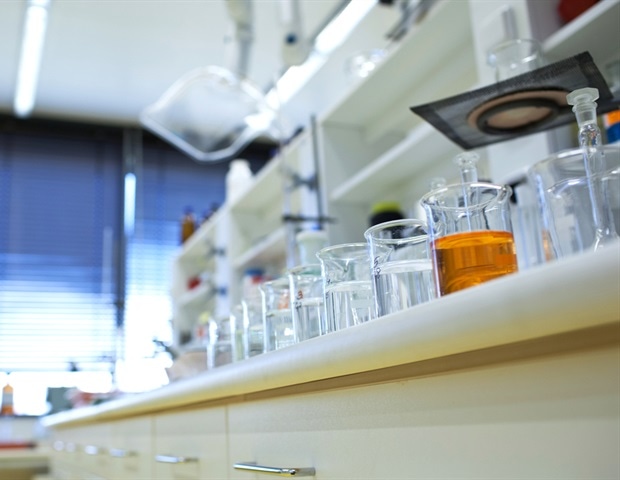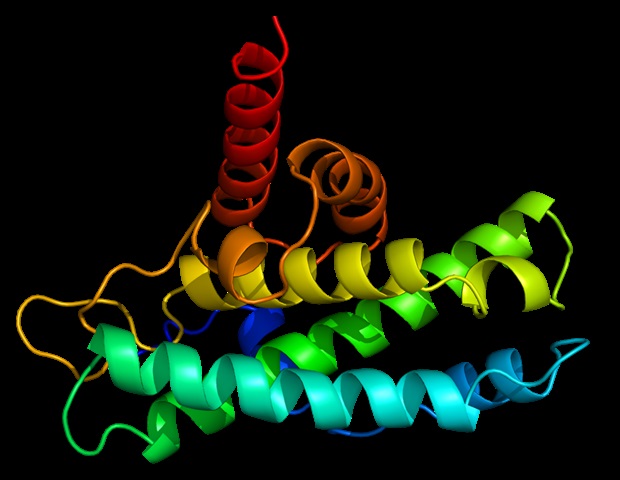The antibodies induced after coronavirus illness 2019 (COVID-19) vaccination or extreme acute respiratory syndrome coronavirus 2 (SARS-CoV-2) an infection have a lowered capability to cross-neutralize variants of concern (VOCs). Nonetheless, antibodies aren’t the only mediators of immunity.
A brand new examine revealed within the journal Frontiers in immunology examines the cell-mediated immunity in BNT162b2 COVID-19 mRNA vaccinated well being care staff and COVID-19 sufferers.
 Examine: Lengthy-Lasting T Cell Responses in BNT162b2 COVID-19 mRNA Vaccinees and COVID-19 Convalescent Sufferers. Picture Credit score: Corona Borealis Studio / Shutterstock
Examine: Lengthy-Lasting T Cell Responses in BNT162b2 COVID-19 mRNA Vaccinees and COVID-19 Convalescent Sufferers. Picture Credit score: Corona Borealis Studio / Shutterstock
Cell-mediated immunity
T cells are the mediators of cell-based immunity. They play a necessary function in immune safety, restoration from an acute an infection, and long-lasting immune reminiscence.
The antigen-presenting cells (APCs) current a number of brief peptides of viral proteins to T cells. The T-cell responses are stimulated by these completely different brief peptides. Due to this fact, the T-cell responses aren’t delicate to viral protein mutations just like the antibody responses.
The CD8+ cytotoxic T lymphocytes (CTLs) determine and destroy virus-infected cells. The CD4+ T helper (Th) cells coordinate and improve CTL responses. In addition they stimulate antibody manufacturing by B cells.
Earlier research have proven that SARS-CoV-2 an infection stimulates strong reminiscence CD4+ and CD8+ T-cell responses. This cell-mediated immunity could present long-lasting safety towards reinfections.
Assessing cell-mediated immunity
This examine analyzes the longevity of SARS-CoV-2 spike-specific antibody, and cell-mediated immunity in BNT162b2 vaccinated well being care staff and COVID-19 sufferers.
This examine included 23 totally vaccinated well being care staff (two doses of BNT162b2 vaccine), 15 COVID-19 sufferers, and 13 people with no earlier SARS-CoV-2 an infection or COVID-19 vaccination. Blood samples had been collected from the vaccinated people six weeks, three months, and six months after the primary vaccine dose; the convalescent COVID-19 sufferers at 18 to 45 days (imply 33 days) after SARS-CoV-2 an infection.
Peripheral blood mononuclear cells (PBMCs) had been remoted from the blood and activated with peptides from the entire SARS-CoV-2 spike protein. The T cell subtypes throughout the PBMC inhabitants had been characterised utilizing circulation cytometry.
The expression of various cytokines was measured utilizing RT-qPCR. As well as, the degrees of cytokines and different molecules secreted by the cells had been detected utilizing Luminex. Anti-SARS-CoV-2 antibodies had been measured utilizing enzyme immunoassay (EIA). The activation-induced marker (AIM) assay was optimized earlier than analyzing the samples.
PBMCs had been stimulated with the wild-type SARS-CoV-2 Wuhan virus spike peptide pool. A 48h stimulation and measurement of IFN-γ and IL-2 mRNA ranges had been chosen for all analyses. Tetanus toxoid was used as a optimistic management. Each IFN-γ and IL-2 are Th1-type cytokines.
T-cell responses
SARS-CoV-2 spike-specific CD4+ cell responses had been detected in all COVID-19 sufferers and vaccinated people 6 weeks, 3 months, and 6 months after the primary vaccine dose.
CD8+ cell responses had been detected in 80% of COVID-19 sufferers and 70% of vaccinated people 6 weeks publish first dose; in 67% of vaccinated people 3 months publish first dose; and in 53% of vaccinated people 6 months publish first dose. These T-cell responses had been related within the COVID-19 sufferers and vaccinated people.
The T-cell responses towards VOCs had been assessed by stimulating the PBMCs with peptide swimming pools from spike proteins of Alpha, Beta, Gamma, and Delta variants. CD4+ cell responses towards all VOCs examined had been detected in over 71% of vaccinated people and over 75% of COVID-19 sufferers.
CD8+ T-cell responses towards all VOCs examined had been detected in over 50% of vaccinated people and over 75% of COVID-19 sufferers. Nonetheless, important variations had been noticed between wild-type and Gamma variant 6 weeks post-vaccination and wild-type and Beta variant 6 months post-vaccination.
COVID-19 sufferers had stronger CD4+ and CD8+ responses in comparison with vaccinated people. There was no lower in cell-mediated immunity towards VOCs after 6 months.
The expression of IFN-γ and IL-2 mRNA was detected in 93% and 100% of vaccinated people after stimulation with the wild-type and Delta variant spike peptide pool. The mRNA ranges had been increased in comparison with mRNA ranges in PBMCs collected from unvaccinated and uninfected people. The IFN-γ and IL-2 mRNA expression had been related between COVID-19 sufferers and vaccinated people.

Correlation of humoral immunity to cell-mediated immunity after BNT162b2 vaccination n = 23 and SARS-CoV-2 an infection. (A) Anti-SARS-CoV-2 S1-specific IgG, S1 complete Ig, and N protein-specific IgG antibody responses had been measured from samples collected at 6 weeks, 3 months, and 6 months after vaccination n = 23 or 1 month after PCR confirmed SARS-CoV-2 an infection (n=15). Serum antibody ranges of vaccinated and contaminated people had been in contrast with destructive controls (n=13) that had not acquired any COVID-19 vaccines or suffered from a earlier SARS-CoV-2 an infection. Bars symbolize the geometric imply titers. The cut-off values for a optimistic check outcome are proven with dotted line Statistical evaluation was carried out with Mann Whitney U-test for comparability of 6wk vaccinee samples with COVID-19 affected person samples. ****p<0.0001. (B,C) The correlation of anti-SARS-CoV-2 S1 IgG antibody ranges with SARS-CoV-2 (wt) spike particular CD4+ and CD8+ T cell responses in (B) vaccinated HCWs (samples collected 6 week, 3 months, and 6 months after vaccination, n= 52) and (C) COVID-19 sufferers (samples collected 1 month post-onset of signs, n=15). Correlation was analyzed with the Spearman’s correlation and Spearman’s r is indicated within the figures.
After stimulation of PBMCs from vaccinated people with wild-type and Delta variant spike peptide swimming pools, IFN-γ and IL-2 protein ranges elevated considerably. The degrees of IFN-γ and IL-2 had been increased in vaccinated people and COVID-19 sufferers than within the unvaccinated uninfected people. IFN-γ and IL-2 ranges didn’t lower 6 months post-vaccination. Furthermore, stimulation with wild-type or Delta variant peptide swimming pools produced equal IFN-γ and IL-2 ranges.
There was a excessive correlation between T cell activation and manufacturing of IFN-γ and IL-2 cytokines.
All vaccinated people produced spike-specific anti-SARS-CoV-2 antibodies six weeks after the primary vaccine dose. The degrees of antibodies had been increased than these of hospitalized COVID-19 sufferers. Within the vaccinated people, antibody ranges decreased step by step.
The degrees of anti-SARS-CoV-2 antibodies in vaccinated people didn’t correlate with CD4+ or CD8+ T-cell responses. Nonetheless, in COVID-19 sufferers, the spike-specific anti-SARS-CoV-2 antibodies elevated with growing CD4+ and CD8+ T-cell responses.
Limitations of the examine
This examine cryopreserved the PBMCs till evaluation. This may occasionally lower cell viability, and some reminiscence cells could also be misplaced within the course of. The variety of members assessed on this examine was comparatively low. Solely BNT162b2 vaccinated people had been studied. This examine didn’t embrace vaccinated people over 60 years of age. The AIM protocol didn’t check for longer incubation instances. Longer 15-mer peptide swimming pools had been used for stimulation as a substitute of 9-to 10-mer peptides. This may occasionally underestimate the SARS-CoV-2-specific CD8+ cells.
Conclusion
This examine reveals that even when SARS-CoV-2 spike protein-specific antibodies decline with time after COVID-19 vaccination or pure an infection, the cell-mediated immunity is retained to a terrific extent and is just not delicate to mutations within the viral spike protein.







